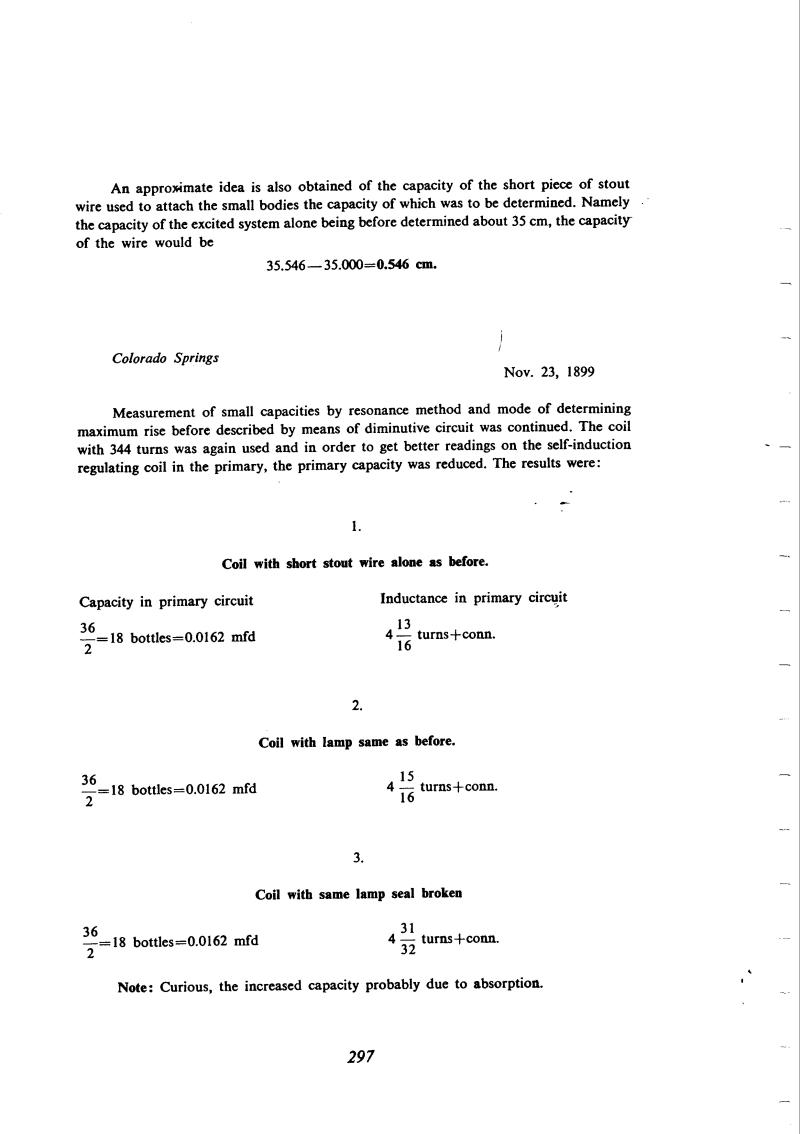
Nikola Tesla Books
An approximate idea is also obtained of the capacity of the short piece of stout wire used to attach the small bodies the capacity of which was to be determined. Namely the capacity of the excited system alone being before determined about 35 cm, the capacity of the wire would be
35.546 - 35.000 = 0.546 cm.
Colorado Springs
Nov. 23, 1899
Measurement of small capacities by resonance method and mode of determining maximum rise before described by means of diminutive circuit was continued. The coil with 344 turns was again used and in order to get better readings on the self-induction regulating coil in the primary, the primary capacity was reduced. The results were:
| 1. | |
| Coil with short stout wire alone as before. | |
| Capacity in primary circuit | Inductance in primary circuit |
| $! {36 \over 2} $! = 18 bottles = 0.0162 mfd | 4 $! {13 \over 16} $! turns + conn. |
| 2. | |
| Coil with short stout wire alone as before. | |
| $! {36 \over 2} $! = 18 bottles = 0.0162 mfd | 4 $! {15 \over 16} $! turns + conn. |
| 3. | |
| Coil with same lamp seal broken | |
| $! {36 \over 2} $! = 18 bottles = 0.0162 mfd | 4 $! {31 \over 32} $! turns + conn. |
Note: Curious, the increased capacity probably due to absorption.
297
November 22-23
Tesla performs the measurement of small capacitances in values of a few cm. These experiments illustrate the high level of the resonant method perfection in the form described on Nov. 10. The abbreviation E.R. pertains to the magazine "Electrical Review" in which Tesla published in 1896 and 1897 a series of articles on X-rays (please see comment of June 6, 1899.)

